9 Warm-Up Mistakes That Are Hurting Your Body After 50
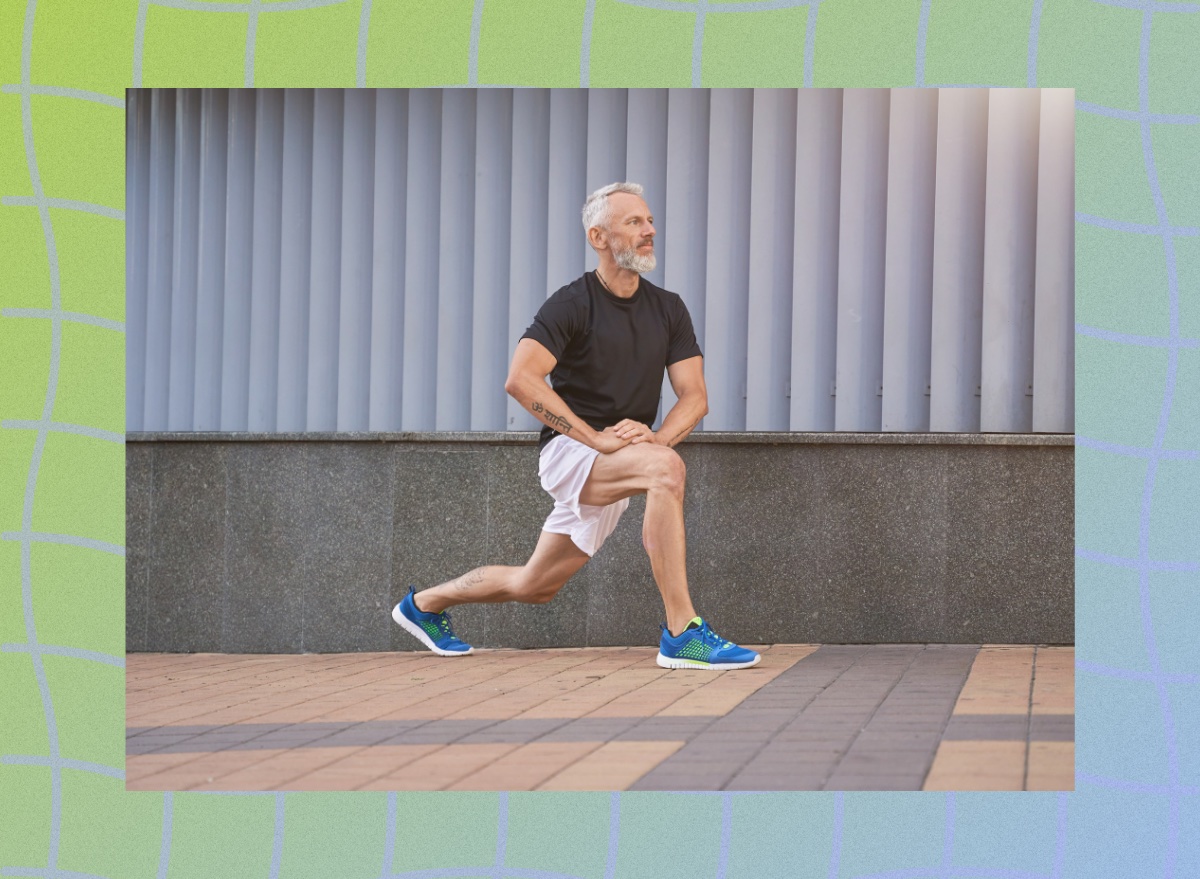
Everyone wants to stay active and healthy as they age, but are your warm-up habits helping or hurting you? As a Doctor of Physical Therapy with over 12 years in the fitness and wellness space, I’ve dedicated my career to helping older adults maintain their strength and mobility. Through my concierge PT practice in San Diego, I’ve seen firsthand how proper warm-ups can make or break your fitness journey after 50. I’m Dr. Rockie, and I’m here to share critical warm-up mistakes you might be making—and more importantly, how to fix them to protect your body and maximize your workouts.
Only Doing Static Stretches (or Skipping Warm-ups Entirely)
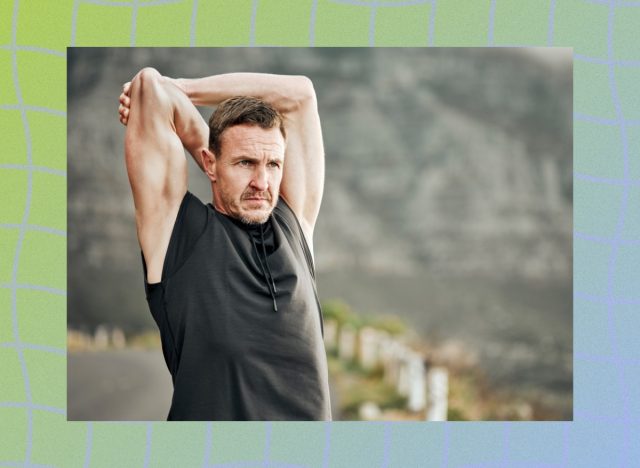
I tell everyone who will listen to me, “Warming up is vital before exercising.” I especially tell this to all of my clients over the age of 50. Not just because I want to bug them until they hear my voice inside of their head when I’m not around (which they say does happen), but also because our bodies undergo many physiological changes that place this population at a higher risk of injury. As we age, joint flexibility, muscle elasticity, and duration of recovery are all affected. Collagen production decreases, muscle mass is lost quicker, and joints become stiffer, which causes the muscles to decrease response to quick, sudden movements or loads on the body, which puts the individual at risk for injury.
The most damaging warm-up habit is skipping the warm-up altogether or only doing static stretches at the beginning of your workouts. Muscles that haven’t been warmed up yet have a decrease in blood flow and elasticity. If someone goes straight into static stretches (holding a stretch) or intense exercising, this could lead to muscle strains and injury. Additionally, static stretches actually decrease muscle strength and performance.
The correct way to complete walking and/or dynamic warm-up is to make sure things are moving well by warming up the tissues. Warm up for 5-10 minutes at moderate intensity so that you feel a gentle increase in heart rate and activation of your muscles. It is best to complete dynamic movements using multiple muscle groups to achieve the necessary intensity and goal of the warm-up. Dynamic movements involve moving large muscle groups through a full range of motion. Some examples are lunges, arm circles, squats, and leg swings.
Stop Bouncing During Stretches
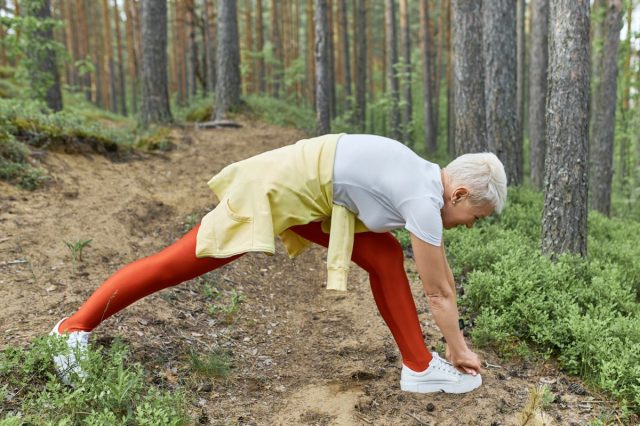
The second most damaging habit I see older adults do is bouncing while completing static stretches. For example, when individuals bounce while reaching for their toes. Research suggests that doing these quick, jerky movements could cause the muscle to be overstretched, leading to micro-tears and/or possible strains in the muscles and tendons. Additionally, when someone bounces during a static stretch, muscle reflexes turn on, and they are more likely to resist the force of the stretch due to the quick movement. This causes a protective contraction to prevent overstretching. However, this could also lead to muscle tension and damage rather than the desired elongation of muscles. This means you’re not actually stretching the muscle or improving mobility.
Another thing I always tell people when I see them do it is “no bouncing.” I know I sound like a Drill Sergeant sometimes. At the beginning of a workout, complete dynamic stretching. Static stretching is great at the end of a workout, but no bouncing. Hold a static stretch at the end of a workout for 15-30s with proper form in order to allow the muscle tissues to elongate to increase overall flexibility.
Fix Your Stretching Form
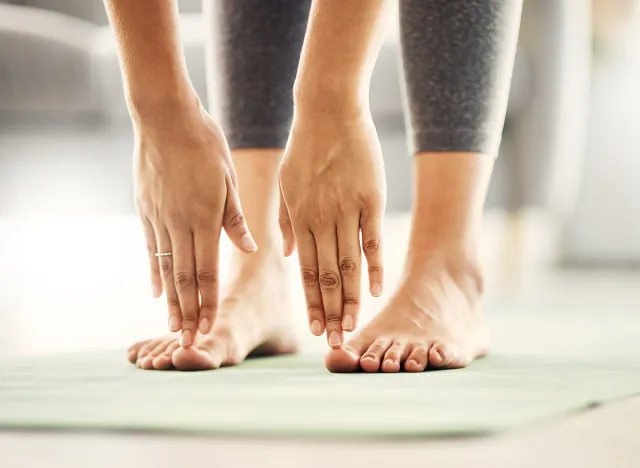
I have seen older adults use poor posture and technique while stretching, which does not properly stretch the desired targeted muscle. For example, many people curve their backs and bend their knees to reach their toes when stretching their hamstrings. This is an improper technique and does not allow the full range of motion to elongate the hamstrings. This is because there is an origin of the muscle on the pelvic and insertion of the muscle a little below the knee. To optimize stretching the hamstrings, you need to ensure that your back is flat and your knees are straight.
But there’s hope! Pay attention to your form and educate yourself on proper technique with stretches. If you need help or other eyes on you to correct your form, reach out to a certified personal trainer or physical therapist.
Don’t Skip Pre-Workout Hydration

You knew it was coming. Drink. More. Water. Hydration is very important when starting a workout. Some adults 50 years and over have a hard time drinking enough water because they may not feel thirsty as much, but this is not something to overlook. Dehydration could reduce proper muscle function and increase the possibility of cramps along with fatigue during workouts. For individuals who exercise in the morning, this is especially important because we are dehydrated when we wake up from not drinking water during our sleeping hours. If you wake up (maybe have a coffee- which further dehydrates you) and start to exercise without proper hydration, this could be very damaging to your body.
Good news! This is an easy habit to implement. I would also recommend using a good electrolyte supplement, coconut water, or fresh lemon in your water to hydrate even better.
Avoid Complex Exercises Too Early

Functional exercises involving multiple muscle groups and joints are great, but completing these complex compound exercises without a good warm-up could pose a risk. Some examples of compound exercises are Olympic lifts, squats, deadlifts, and HIIT. These exercises require more coordination and strength. Not only are you utilizing your musculoskeletal system, but also your nervous system. The body is a wonderful machine that can adapt to load but requires a gradual increase not only for your muscles but also for your nervous system. If the body is not warmed up properly, the nervous system may not coordinate necessary muscle contractions or correct timing of contractions, which could lead to poor technique and possible injury.
Start with a dynamic warm-up or movement-specific warm-up. An example of a movement-specific warm up is if you plan to start deadlifts, complete the deadlift movement with proper form slowly without weight. Continue to focus on form as you progress with weight.
Don’t Rely on Cardio Alone

Cardio, such as walking, does get your blood flowing and can be part of a warm-up prior to a strength training session. However, it’s best to also incorporate all of the muscle groups and joints you plan to work out into your warm-up. Walking or other cardio activities may not allow the muscles to work in their full available range of motion to decrease stiffness and fully activate the proper muscle fibers.
Walk if you’d like to walk, but if you plan to strength train legs, then incorporate lunges while you’re walking or butt kicks. Both help you get into a full range of motion to really get ready for your strength training session.
Activate Your Core Properly

Many people lack awareness of their core muscles and don’t properly turn them on during exercise, including a dynamic warm-up. The core muscles play an important role in stabilizing your spine and pelvic floor muscles. Weak or unactivated core muscles lead to poor posture and may lead to back pain or injuries.
It’s not as simple as “sucking it in” to properly activate your core muscles. The proper way to activate your core muscles is to start in a standing position and exhale forcefully as if you were about to cough. As you do this, brace your core muscles and hold. You should feel your abdominal muscles tighten. You want to maintain this core activation while you complete your warm-up and your workout.
Pay Attention to Your Joints

We have been talking mostly about warming up the muscles properly, but another harmful habit would be ignoring the joints. As we age, our joints become stiffer, possibly causing a decreased range of motion. Have you ever heard, “Move it or lose it”? This is very true of joint range of motion. If we stop using the range of motion of our joints, over time our joints are no longer able to reach the full range of motion. I’ve seen this when people stop overhead arm reaching activities in their daily lives. For example, they stop reaching for the coffee cup in the higher cabinet. After time, they not only lose strength in those specific ranges, but the joint capsule may no longer allow it.
Get in all ranges with your wrists, ankles, knees, hips, and shoulders. Some examples are to complete wrist and ankle circles. Warm up your knees with marches, fully bending and extending. Get a big overhead reach and arm circles to warm up your shoulders. Keep those joints moving in all ranges.
Remember to Breathe
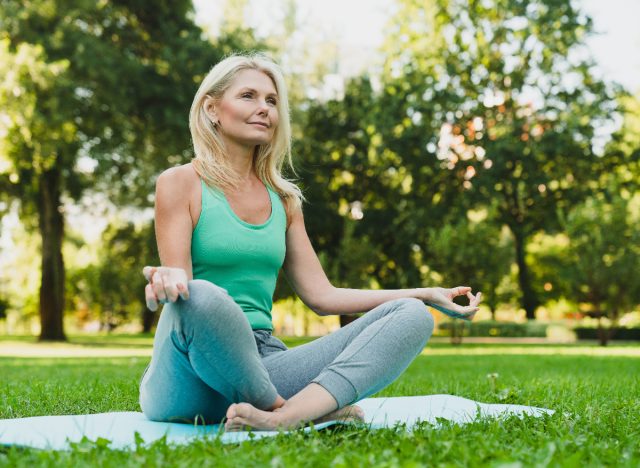
Many individuals tend to hold their breath during a workout and during a warm-up. Both activities require breathing. Your breath is your life force, supports proper core activation and oxygen supply to your muscles, and reduces tension. Lack of oxygen also causes fatigue sooner, possibly hindering your ability to exercise longer and overall performance.
The solution: sync your breath with your exercise. For example, maybe let’s say you’re doing a dynamic warm-up of movement-specific squats since you plan to work out your legs. Start in a standing position and inhale. Exhale as you go down into a squatting position then inhale as you return to standing. If you want an activity that could help guide you with syncing your breath with exercise, yoga is a great option since using your breath is very much in the yoga practice and instructors usually provide verbal cues on when to inhale and exhale.
It may feel overwhelming to implement all of these habits but simply start with identifying 1 or 2 habits you can improve upon and then take small action steps in the right direction. The most important thing is to keep moving. Keep being active. These are a few habits to stay active safer, so that you can keep doing what you love to do in life. Just do it after a warm-up. And if you enjoyed this article, don’t miss How Long Your Walking Workout Should Be To Shrink Belly Fat.